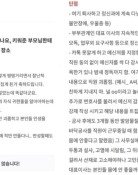Higher Demand for Vocational HS Grads
The number of employed people last month increased by the largest margin in 56 months, with the jobless rate falling to the three-percent level for the first time in four months. The number of unemployed also fell under one million for the first time in four months, suggesting that the economy is seeing higher demand for workers amid the fast recovery.
The number of jobless declined for all age groups, but people in their 20s continued to suffer high unemployment. While the number of jobless in their 30s or older declined, that of those in their 20s increased 11,000. The number of employed between ages 15 and 29 also fell 1.8 percent from a year ago. The gap in the employment situation is wide even among youth groups according to educational levels. The number of jobless fell among those with just a high school diploma or lower, but the unemployed figure for college graduates rose.
As companies have expanded production and investment amid the economic recovery, demand for graduates of vocational and technical high schools needed at industrial workplaces has increased. Graduates of vocational high schools have received requests for employment from multiple companies, and can freely select their company of choice. Companies are struggling to recruit them earlier than usual this year to secure technical workers. The 500 industrial and commercial high schools nationwide have almost 160,000 12th graders enrolled. Given that nearly 80 percent of them enter college, however, only 30,000 to 40,000 of them seek jobs after graduation.
The paradox is that college graduates are struggling to find jobs. They are submitting applications to dozens of employers, but mostly fail in the document screening phase due to the insufficient number of jobs suitable for them. Analysts say more than 45,000 graduates of technical and four-year colleges will fail to land jobs every year through 2018, despite the rising number of people entering college. After 2016, the number of students to enter colleges will be insufficient to meet school quotas. Hence, a flurry of colleges and universities will be forced to shut down. Because of the failure to adjust the student admission quotas at universities, innocent students have suffered.
The Education, Science and Technology Ministry has proposed inducing vocational high school students to land jobs first before going to college and fostering such high schools. The plan is to include national universities in a college admissions program that allows university admission to high school graduates who first work for industrial companies for more than three years. Lowering the ratio of college entrance among vocational high school graduates will prove difficult, however, as the figure is nearly 80 percent. A prerequisite to resolving this problem is to cut student quotas at universities and drastically restructure poorly managed colleges that produce unemployed graduates. Twenty national and public universities have cut collective student quotas by 9,000 through mergers over the past five years, but progress has come at a snails pace.







